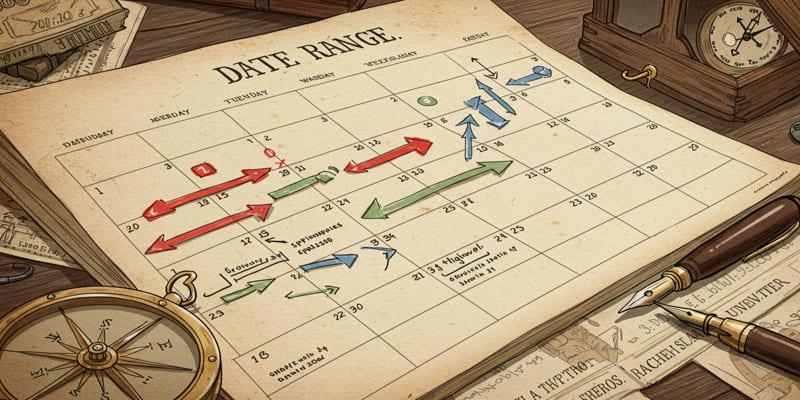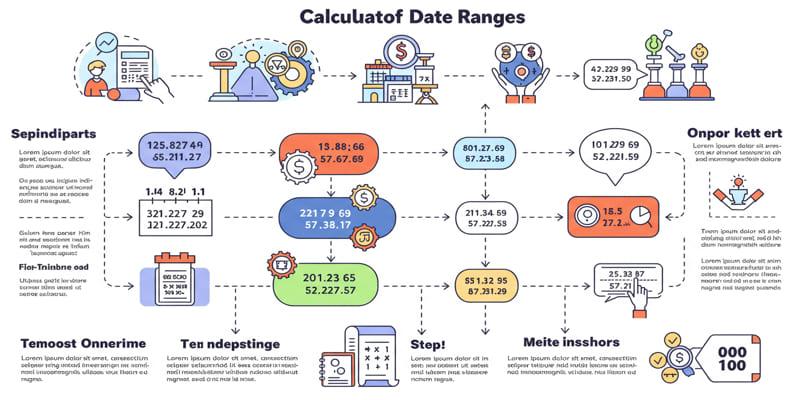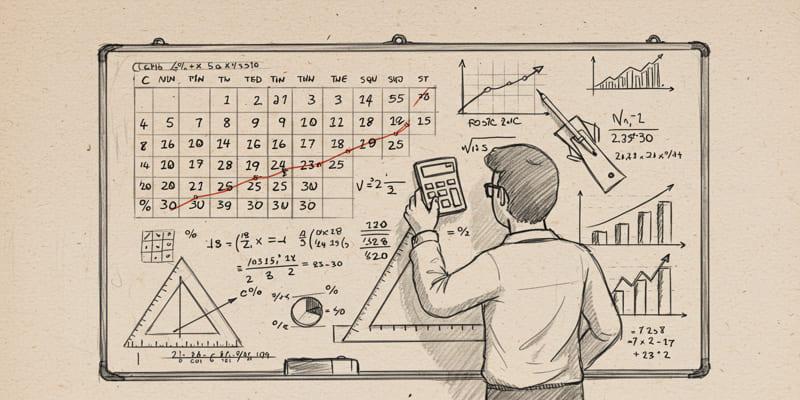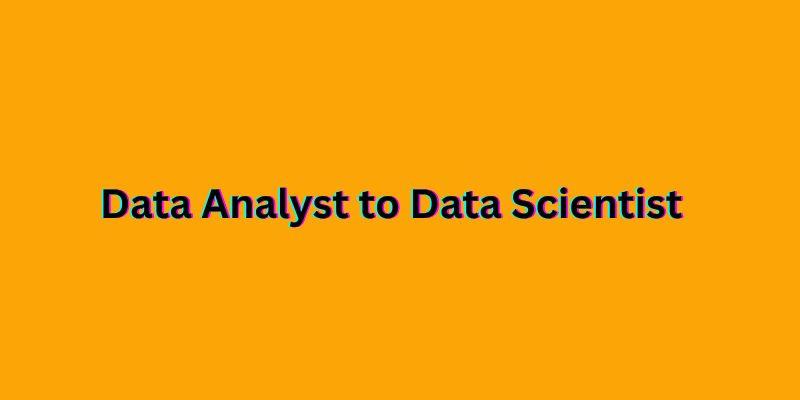Date range calculations in DAX are a fundamental function in insightful data analysis in terms of time in the data analytics world, particularly with Power BI. The Data Analysis Expressions (DAX) offers a good arsenal of functions enabling users to create and manage date ranges effectively. By learning this, analysts will be able to build dynamic reports that can trace trends, allow comparison of periods, and gauge the performance of certain or relative periods.
The Importance of Calculating Date Ranges in DAX

The concept of time is essential to most business questions: What did the sales last quarter? In comparison to the last month, how has this month been? Where to find answers to these requires dynamically computing date ranges as opposed to manually filtering dates. Calculating and working with Date ranges in DAX formulas can be used to make various models more flexible and more accurate, reporting interactively and responsively to user input.
Dates in Power BI are not just filters, but rather programmatically manipulable variables that will produce custom ranges to be used by aggregation or comparison. Powerful: The ability to specify exact or relative periods within your data model. DAX date functions, such as DATESBETWEEN(), DATESINPERIOD(), and DATEADD(), are used when you simply need to specify an exact or relative period.
Important DAX Date Functions to Compute Date Ranges
The three major DAX functions to generate date ranges are:
DATESBETWEEN(): This is an inclusive two-boundary (a start date and an end date) table of dates between two boundaries. Apply it to an exact date range to be fixed in your formula. This can be applied in the analysis of data within given known dates.
DATESINPERIOD(): Gives a table with a start date specified and the number of intervals within the date range of that Date, which is expressed in days, months, or years. It is an excellent dynamic method when you have a time gap between one specific moment in time, like the past 30 days or the upcoming 3 months.
DATEADD(): Gives a date range that moves forward or backward depending on the present filtering environment. It is frequently applied to period-over-period comparisons, such as same period last year, or previous quarter.
Here's a quick summary of these functions:
Function | Description | Use Case Example |
|---|---|---|
DATESBETWEEN() | Exact date range between two dates | Sales between May 1 and May 31, 2025 |
DATESINPERIOD() | Dynamic interval from a start date | Last 90 days starting from a given date |
DATEADD() | Shifts range relative to context | Compare current month to same month last year |
Example Use Cases for Date Range Calculation in DAX
Take the case of a business that is interested in analyzing sales data on a custom window of 25 days beginning May 5, 2025.
Using DATESINPERIOD():
text
DATESINPERIOD('Date'[Date], DATE(2025, 5, 5), 25, DAY)
Using DATESBETWEEN():
text
DATESBETWEEN('Date' [Date], DATE(2025, 5, 5), DATE(2025, 5, 30)) This precisely covers May 5 through May 30, inclusive.
Such formulas are flexible; the former is interval-based, and the second provides explicit limits. Recognizing this difference is the most important to get the right calculations and report interpretations.
Importance of a Power BI Date Table

Effective time intelligence calculations are based on a full Power BI date table. This table is a calendar as it is a date that is continuous, and date filtering and relationships across the data model are the same. This can be created using DAX formulas such as:
text
Date = CALENDAR(DATE(2025,1,1), DATE(2025,12,31)) or define CALENDARAUTO () to auto-define on model data. Power BI date table is the cornerstone of effective use of date range DAX code to ensure the integrity of date context in calculations such as totals, averages, and comparisons.
Joining the fact tables and the date table provides the ability to perform dynamic filtering and period calculations that react smoothly to user choices.
Additional Useful DAX Date Functions
Other functions of the DAX date improve your date calculations:
- DATE(): Builds a date using year, month, and day. Example: DATE(2025,5,5)
- DATEDIFF(): Determines the interval between two dates in terms of days, months, years, and so on.
- TODAY() and NOW: The current Date or Date and time, which can be useful in the relative period or up-to-date reporting.
- EDATE() and EOMonth(): produce dates, one month at a time, or by the end of a month, which can be used to bill or to produce month-end reports.
Using these functions expands the date range analysis possibilities within Power BI.
Best Practices to Compute Date Range in DAX
- Make your date columns correct
When using date functions, make sure date fields are in date/time format to prevent errors.
- Use variables for complex calculations
Variables also help date range logic to be more complex, and formulas easier to read.
- Test formulas on subsets
Test with small ranges first to ensure that the scaling to longer periods or large data works.
- Understand interval inclusivity
Be aware of whether your date range has or does not have boundary dates, depending on the function you use.
- Combine with filters and slicers
Use CALCULATE() and slicers along with Date ranges for interactive reports.
Conclusion
The date range calculations in DAX make dynamic and accurate time-based analysis in Power BI. Understanding the dates when and how to use functions such as DATESBETWEEN, DATESINPERIOD, and DATEADD will give you an opportunity to customize Date ranges to fit your analysis and improve insights and decision-making. These functions, in combination with a strong Power BI date table, form a strong base of advanced time intelligence solutions.











